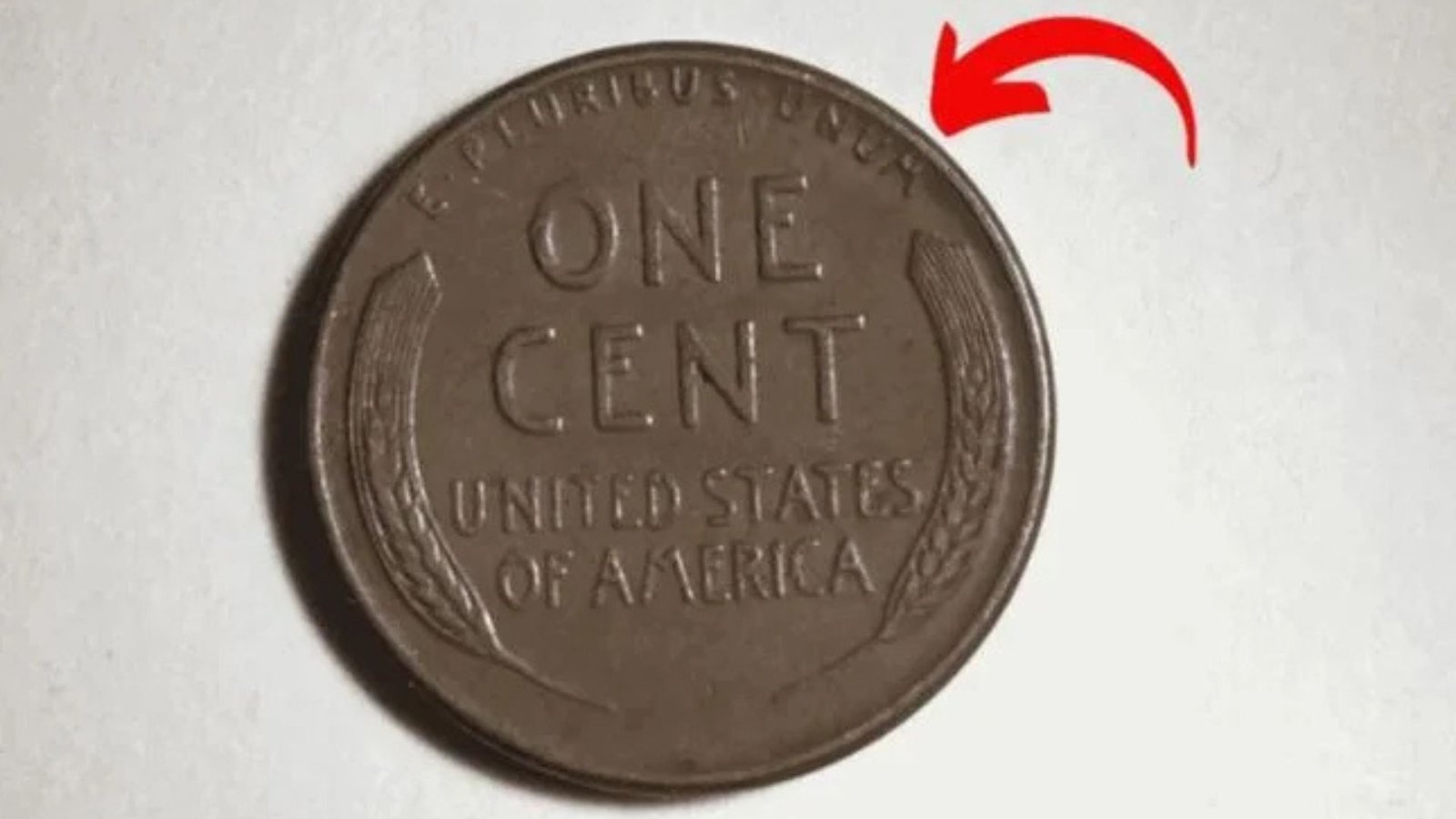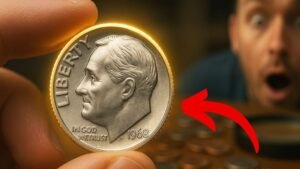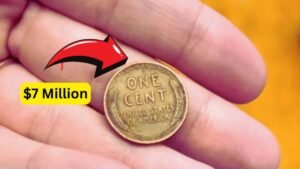Imagine finding a penny in your pocket worth $5 million! The Lincoln Wheat Penny, a classic American coin, has some rare versions that have collectors buzzing. One such penny, with unique errors or pristine condition, could fetch millions at auction. Could one be hiding in your change or coin jar? Let’s dive into the hunt for the $5 million Lincoln Wheat Penny, why it’s so valuable, and how to spot this treasure.
What Is the Lincoln Wheat Penny?
The Lincoln Wheat Penny was minted from 1909 to 1958, featuring Abraham Lincoln’s portrait on the front and two wheat stalks on the back. Billions were made, making most worth just a cent. However, rare varieties, especially those with minting errors or low production numbers, have sold for massive sums, with some reports claiming values up to $5 million. These coins are a collector’s dream due to their history and rarity.
Why Are Some Lincoln Wheat Pennies So Valuable?
Several factors make certain Lincoln Wheat Pennies worth millions:
- Minting Errors: Mistakes like using the wrong metal or doubled designs create rare coins.
- Low Mintage: Some years or mints produced fewer coins, increasing their value.
- Condition: Pennies in excellent, uncirculated condition with original red color are highly prized.
- Historical Appeal: As a symbol of early 20th-century America, these coins attract collectors.
While a $5 million penny may be unverified, some have sold for $1.9 million to $2.5 million, making the hunt exciting.
Top Rare Lincoln Wheat Pennies to Look For
Here are some of the most valuable Lincoln Wheat Pennies that could be worth thousands or more:
1. 1943 Bronze Lincoln Penny
During World War II, pennies were made of steel to save copper, but a few bronze pennies were accidentally minted. One sold for $1.9 million, with top examples rumored to reach $5 million.
2. 1969-S Doubled Die Obverse
This penny has doubled text on “LIBERTY” or the date, making it rare. High-grade versions can fetch $100,000–$1.9 million.
3. 1909-S VDB Lincoln Penny
With a mintage of just 484,000 and the designer’s initials (VDB), this coin is worth $50,000–$144,000 in top condition.
4. 1914-D Lincoln Penny
Only 1.2 million were minted in Denver, making it rare. A pristine example sold for $85,000, with some valued higher.
5. 1955 Doubled Die Obverse
A minting error caused doubled text on “LIBERTY” and the date, valued at $1,000–$2,500+ in good condition.
Valuable Lincoln Wheat Pennies to Watch For
| Year | Mint Mark | Special Feature | Estimated Value |
|---|---|---|---|
| 1943 | None, D, S | Bronze error | $100,000–$1.9M+ |
| 1969-S | S | Doubled die obverse | $10,000–$1.9M+ |
| 1909 | S VDB | Low mintage, VDB initials | $50,000–$144,000+ |
| 1914-D | D | Low mintage | $1,000–$85,000+ |
| 1955 | None | Doubled die obverse | $1,000–$2,500+ |
How to Spot a $5 Million Lincoln Wheat Penny
Finding a valuable penny takes careful inspection. Here’s how to check your coins:
1. Check the Date and Mint Mark
- Look for key dates like 1909, 1914, 1943, 1955, or 1969 on the front.
- The mint mark (D for Denver, S for San Francisco, or none for Philadelphia) is below the date. “D” or “S” marks often indicate rarity.
2. Look for Errors
- Use a magnifying glass to spot doubled text on “LIBERTY” or the date (e.g., 1955 or 1969-S pennies).
- For 1943 pennies, check if it’s bronze (not magnetic) instead of steel (magnetic).
3. Assess Condition
- Coins with sharp details, no scratches, and a reddish or red-brown color are worth more.
- Never clean pennies, as this can ruin their value.
4. Get a Professional Appraisal
- If you suspect a rare penny, take it to a coin dealer or grading service like PCGS or NGC for authentication.
Tips for Coin Collectors
- Handle Carefully: Hold coins by the edges to avoid fingerprints or damage.
- Store Safely: Use protective holders to preserve condition.
- Research Prices: Check auction sites like Heritage Auctions for recent sales data.
- Join Communities: Connect with collectors on forums, X, or local clubs for tips and news.
Are Lincoln Wheat Pennies Still in Circulation?
Yes, some Lincoln Wheat Pennies, especially from the 1940s and 1950s, can still be found in circulation, like in pocket change or old coin rolls. However, ultra-rare coins like the 1943 bronze or 1909-S VDB are more likely in private collections, estate sales, or forgotten jars. The recent discovery of a 1914-D penny in a tool shed shows these treasures can still turn up in unexpected places.
Why the Hype Around Lincoln Wheat Pennies?
The Lincoln Wheat Penny’s classic design and ties to American history, from the Great Depression to World War II, make it a collector favorite. Recent buzz on X and articles about a $5 million penny, while possibly exaggerated, highlight real sales like a $1.9 million 1943 bronze penny. The thrill of finding a fortune in spare change keeps collectors and hobbyists searching.
Conclusion
The hunt for a $5 million Lincoln Wheat Penny is on! Rare versions like the 1943 bronze or 1969-S doubled die could turn your change into a fortune. By checking dates, mint marks, and errors, you might uncover a treasure in your pocket or attic. Use a magnifying glass, avoid cleaning coins, and get professional appraisals for suspected finds. Keep searching—your next penny could make you a millionaire!
FAQs
Q: Are Lincoln Wheat Pennies Still in Circulation?
Yes, some from the 1940s and 1950s are in circulation, but rare ones like the 1943 bronze are more likely in collections or old jars.
Q: Why Is a Lincoln Wheat Penny Worth $5 Million?
Rare errors like the 1943 bronze or high-grade 1969-S doubled die can fetch $1.9M+, though $5M claims may be unverified.
Q: How Do I Spot a Valuable Lincoln Wheat Penny?
Check for key dates (1909, 1914, 1943, 1955, 1969), mint marks (D, S), and errors like doubled text. Get it appraised by PCGS or NGC.
Q: Should I Clean My Lincoln Wheat Penny?
No, cleaning damages coins and lowers their value. Handle them by the edges and store in protective holders.
Q: Where Can I Sell a Rare Lincoln Wheat Penny?
Contact reputable dealers or auction houses like Heritage Auctions. Get it graded by PCGS or NGC first for authenticity.




